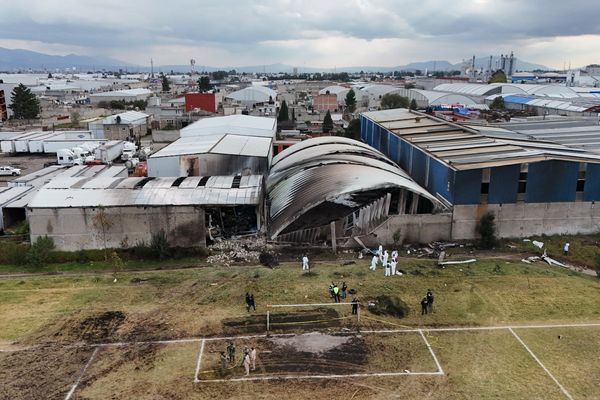The world is full of interesting things which most people have never seen. Fortunately, between ready access to cameras and the internet, we can now view and read about all sorts of parts of our planet’s history, from intriguing natural formations to some of the things ancient humans were putting together.
The “Ancient Nexus” Facebook page is dedicated to interesting posts about history, nature and archeology. So get comfortable as you scroll through, upvote your favorites and be sure to share your own thoughts in the comments section below.
More info: Facebook
#1
"These are the one's who discovered America And should be taught in our history books Not the false storyline they give about Columbus discovery America.…"

Image credits: ancientnexus
#2
While attempting to photograph the iconic El Capitan in Yosemite National Park, a photographer captured something truly extraordinary—the Andromeda Galaxy! Known as the M31 Galaxy, Andromeda is the closest spiral galaxy to our own Milky Way, located about 2.5 million light-years away. It contains over a trillion stars, and is one of the few galaxies visible to the naked eye from Earth. Its light, traveling across millions of years, reaches us as a faint, smudgy shape in the night sky, which the photographer accidentally framed perfectly while focusing on El Capitan. El Capitan, the majestic granite monolith that rises over 3,000 feet above Yosemite Valley, is a favorite subject for many photographers. But in this case, the photographer inadvertently captured the Andromeda Galaxy, creating a stunning blend of earthly and cosmic beauty in one shot.
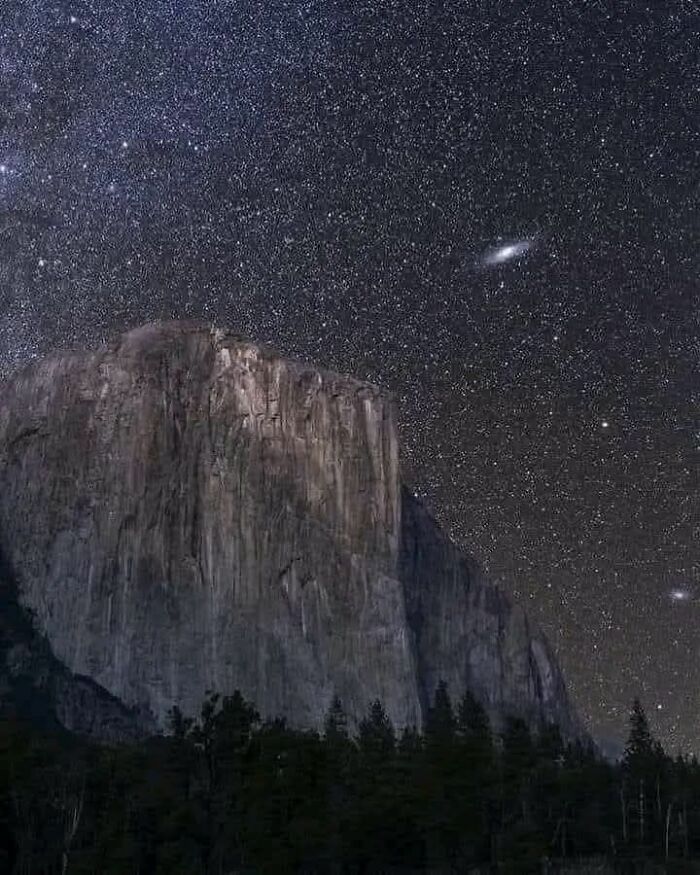
Image credits: ancientnexus
#3
A stunning rose quartz incense burner from the Qing Dynasty. It hails from the Qianlong Reign, which was between 1736 and 1796 CE. Right now, you can see it at the Nanjing Museum in China. It really highlights the amazing craftsmanship and cultural flair of that time period.

Image credits: ancientnexus
There is an unfortunate issue that we often get a very skewed perspective of world history because our records are only of things that survived. Remember, for every stone pyramid, there are thousands of dwellings and buildings that rotted away or fell apart. After all, as anyone who has a home knows, most materials do sustain some wear and tear over time.
This is particularly true if it’s not a stone or marble construction made of massive bricks. Unfortunately, this means a lot of things are just lost to time, or at least very hard to trace. Fortunately, technology has made improvements and bit by bit, archeologists can peel back the layers and get a better idea of what is out there.
#4
Nestled in the stunning landscapes of Sardinia, Italy, Neptune Cave is a true testament to the breathtaking wonders of our planet. With its spectacular stalactite formations and crystal-clear waters, this geological marvel has been sculpted by nature's hand over millions of years, creating an enchanting world beneath the surface.

Image credits: ancientnexus
#5
The pyramids of ancient Egypt weren’t always the crumbling silhouettes we see today. Nope, they were once cloaked in gleaming white limestone, radiating a brilliance that set them apart from everything else in the harsh desert. Picture yourself there, surrounded by relentless sand, and suddenly—bam! These colossal structures explode into your vision, shimmering like priceless gems beneath the relentless sun. How jaw-dropping would that sight have been? A striking testament to the sheer audacity and engineering genius of the ancient Egyptians, who didn’t just build; they dazzled.

Image credits: ancientnexus
#6
Duntrune Castle, located on the north side of Loch Crinan in Argyll, Scotland, is believed to be one of the oldest continuously inhabited castles in Scotland, with origins dating back to the 12th century. The castle has historically been associated with Clan MacDougall and later came under the control of the powerful Clan Campbell, who retained ownership for centuries. It gained a reputation for its role in Scotland’s turbulent clan conflicts, including a famous legend involving a MacDonald piper, who, while held captive, warned his clan of an ambush by playing a haunting tune.

Image credits: ancientnexus
For example, many researchers now use satellite data to “access” parts of the planet it might be hard to travel to. This is particularly true for the various nations that used to exist in Latin America, who often built their cities in remote areas, which are now covered in jungles. Instead of wasting months trekking through the wilderness, archeologists can now pinpoint the exact locations from a computer.
#7
Nestled in Russia’s Perm region, the Berezniki Cave stands as a stunning testament to nature's extraordinary artistry, sculpted over millions of years. Within its depths, the enchanting rainbow walls burst forth in vibrant hues, composed of sylvinite—a potassium-rich mineral that emerged when ancient oceans dried, leaving behind a masterpiece of color. These striking layers of red, orange, and blue have been meticulously crafted under immense geological pressure, resulting in a mesmerizing underground landscape that feels almost otherworldly. Explore this psychedelic grotto and witness the breathtaking interplay of nature's palette at work.
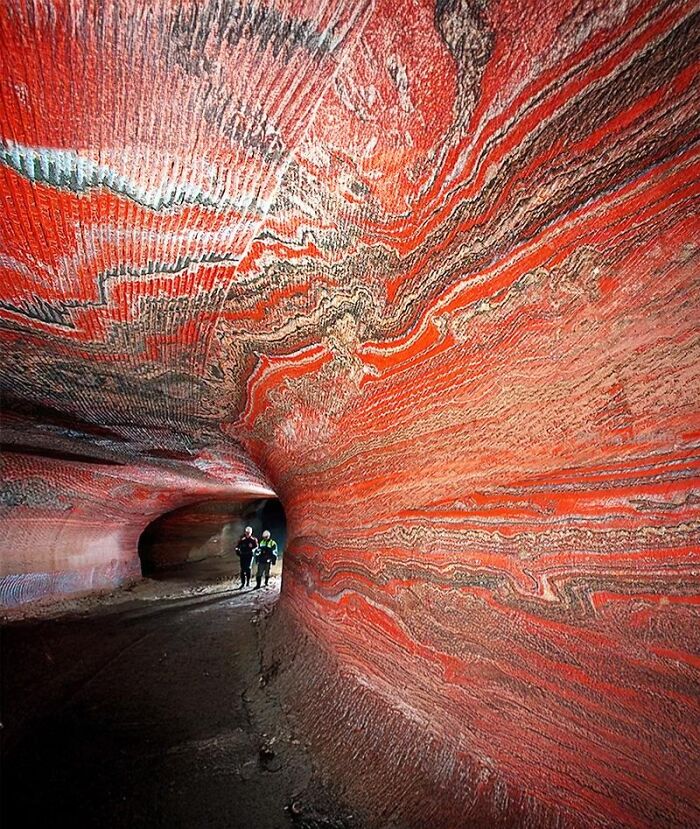
Image credits: ancientnexus
#8
The Pantheon’s dome in Rome, a breathtaking testament to ancient ingenuity. Erected nearly two millennia ago, it reigns as the largest unreinforced concrete dome ever crafted, standing tall at an astonishing 43 meters (141 feet) in both diameter and height. This architectural masterpiece is not just an edifice; it is an enduring source of inspiration. The Romans may not have been the originators of concrete, but they transformed it into an art form using a remarkable blend as described by Vitruvius—lime, pozzolana, and select aggregates forged into a material of unparalleled strength. The dome's ability to withstand the test of time, sans any modern supports, is a testament to the brilliance of Roman engineering, showcasing the extraordinary skill and vision of its builders.

Image credits: ancientnexus
#9
Derinkuyu, located in Turkey, is an impressive underground city that stands as the largest among more than 200 ancient subterranean cities. Spanning nearly 172 square miles, it is designed to house approximately 60,000 residents across its 18 levels. This remarkable achievement in engineering has its origins dating back 3,000 years.
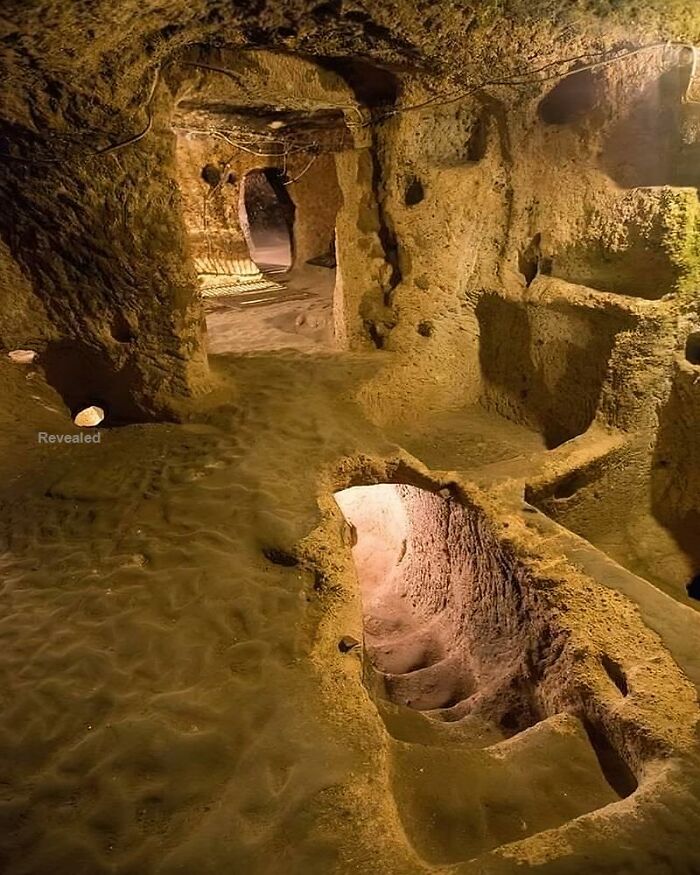
Image credits: ancientnexus
#10
Column of Marcus Aurelius (180 AD), Rome

Image credits: ancientnexus
#11
Check out this amazing hand-colored photo from 1865 that shows a Jewish girl from Damascus, Syria, decked out in her traditional clothes. The colors pop and the patterns are so detailed, really showcasing the rich cultural heritage of the Jewish community back then.

Image credits: ancientnexus
#12
Erected in the year 155 AD, the theater of Aspendos emerges as one of the most impeccably preserved relics of ancient theatrical grandeur. Nestled within the historic Greco-Roman city in Turkey's Antalya province, this extraordinary structure is a testament to the ingenuity and finesse of ancient architectural prowess, captivating the imagination of all who behold its timeless beauty.
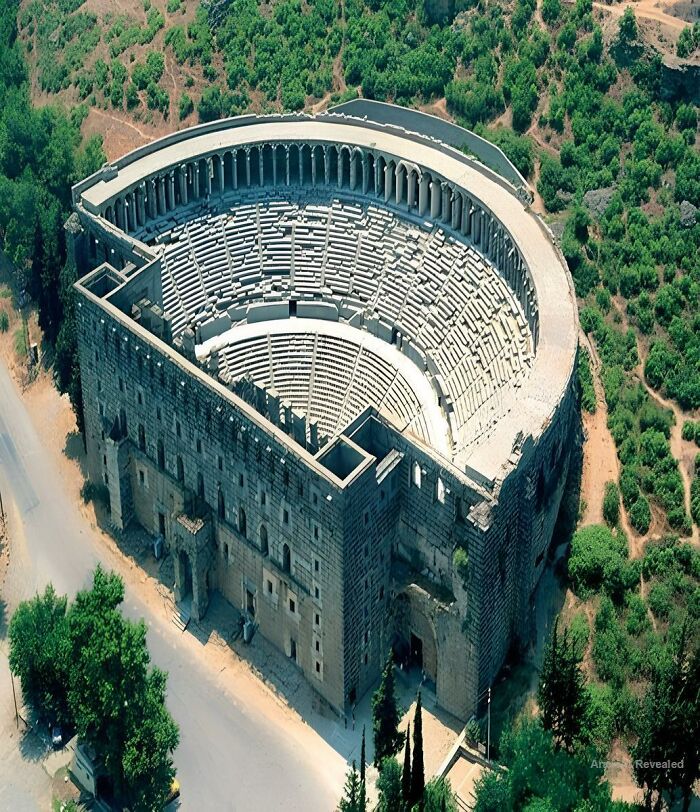
Image credits: ancientnexus
#13
This intricately carved Viking axe head, which dates back to 994 CE, was discovered in Denmark. Unearthed in 1956 near the village of Mammen, this remarkable 1,030-year-old artifact is currently housed in the National Museum of Denmark. The elaborate designs of the axe head exemplify the exceptional craftsmanship and artistry characteristic of the Viking Age, making it a significant piece of historical heritage.
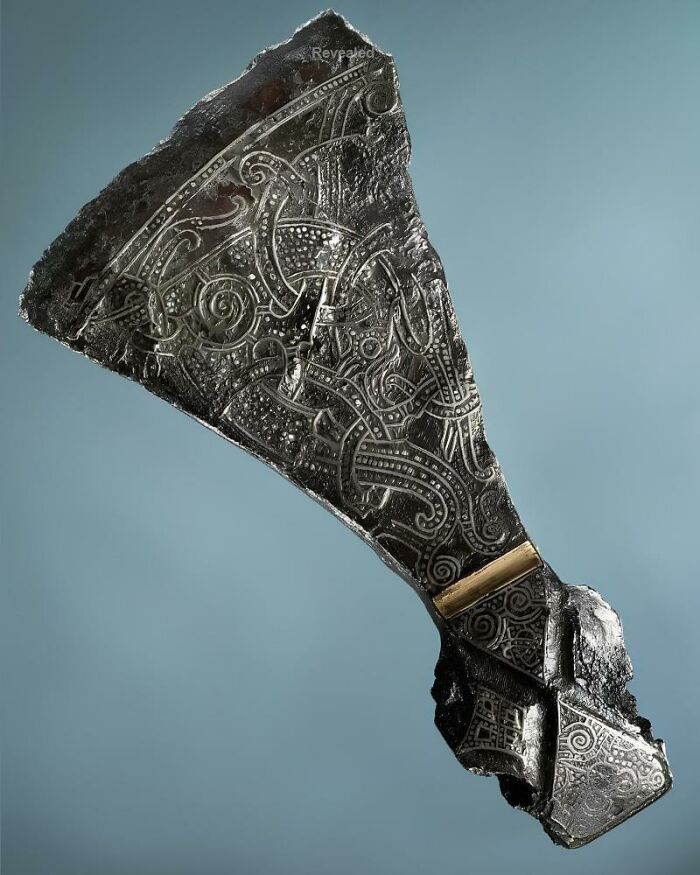
Image credits: ancientnexus
#14
Nestled in the heart of Transylvania, Romania, Corvin Castle rises majestically like a scene plucked from a Gothic fairytale. Erected in 1440 by the formidable Hunyadi family, this fortress once stood as a bastion against the relentless advance of the Ottomans. As you pass through its imposing gates, prepare to wander through more than 50 rooms, each brimming with medieval artistry and echoes of valiant chivalry. The castle's meticulous restoration accentuates its enchanting character, while haunting connections to notorious figures like Vlad the Impaler lend an irresistible air of mystery. Whether you're captivated by its storied past or simply entranced by its enchanting allure, Corvin Castle invites you to embark on a spellbinding journey through the annals of Romania's rich history.
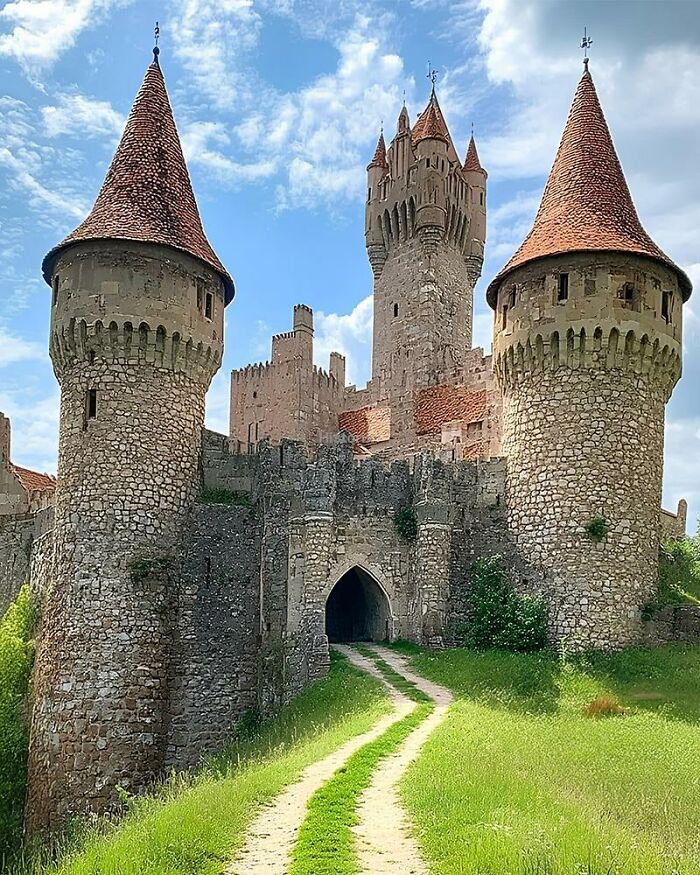
Image credits: ancientnexus
#15
In 2007, an astonishing revelation shook the archaeological community near Seville, Spain. Picture this: a tomb hiding a jaw-dropping 5,000-year-old dagger made from rock crystal, stretching about 8.7 inches of pure craftsmanship, complete with an opulent ivory hilt and sheath. This wasn’t just any run-of-the-mill burial; it likely belonged to the elite of the Copper Age, housing 25 individuals and an impressive array of grave goods. Think amber beads, intricate ivory artifacts, and even remnants of gold blades. These treasures scream of a society steeped in complex hierarchies and rich ceremonial customs, with that striking crystal dagger serving as a bold testament to their cultural brilliance.

Image credits: ancientnexus
#16
Planted by the audacious David Latimer back in 1960, this glass prison of plants has defied the odds and flourished for over six decades with just a single sip of water. Inside this bizarre self-sustaining biome, water doesn't just sit back and relax—it’s in constant motion, cycling through roots, pulling off transpiration tricks, and creating a condensation dance. Photosynthesis pumps out oxygen and the good stuff, while cellular respiration turns organic waste into nutrient gold for those quiet nighttime hours.

Image credits: ancientnexus
#17
Nestled in the stunning landscapes of Thailand, Hin Sam Wan, or Three Whale Rock, is a captivating geological wonder that dates back an impressive 75 million years. From an aerial view, the rocks take on the charming appearance of a family of whales gracefully surfacing from the depths, making for a truly breathtaking spectacle. It's a remarkable showcase of nature's artistry, meticulously sculpted over eons, that leaves visitors in awe of its beauty.
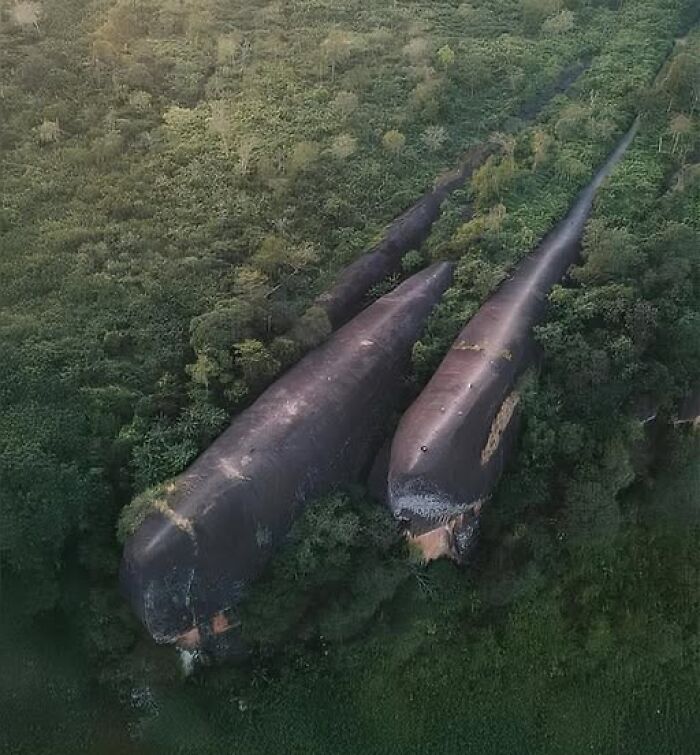
Image credits: ancientnexus
#18
Pimburattewa Tank in Sri Lanka, a marvel of ancient engineering, was constructed by King Parakramabahu I in the 12th century. This impressive structure was designed for water storage and irrigation, highlighting the sophisticated hydraulic systems developed by ancient Sri Lankan civilizations.
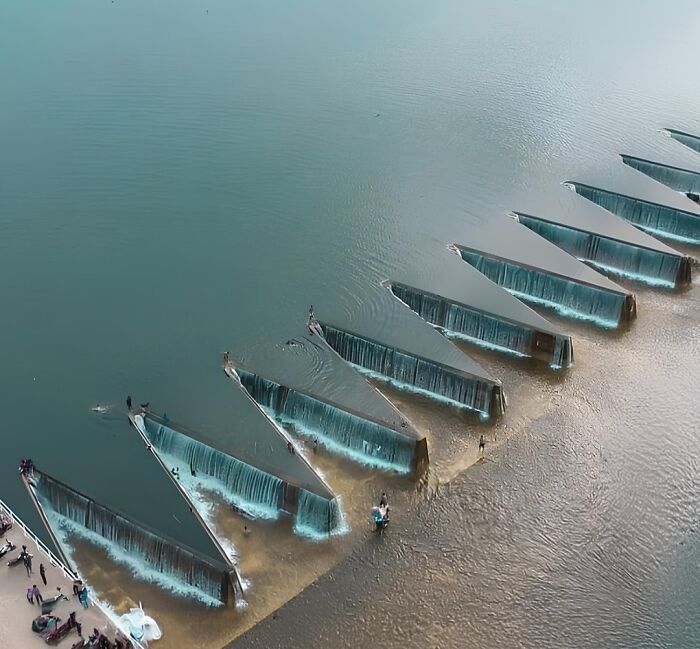
Image credits: ancientnexus
#19
These two leaning towers are symbol of Bologna, a town in northern Italy which was once nicknamed ‘La Turrita’ on account of its 150+towers, of which only 24 remain today. Legend has it that they were inspiration for World Trade Center, since architect Minoru Yamasaki visited Bologna while designing Trade Center towers. Both Towers take name of families who in 12th Century CE, ordered their construction, in a kind of competition to show which family was wealthiest and most powerful. Tallest of two is called Asinelli, while shorter is Garisenda, which leans more than Tower of Pisa by 0.1 degree. In fact, Garisenda was once taller than Asinelli, but when ground yielded in 14th Century CE, incline became so dangerous that they had to shorten it by 12m. Dante Alighieri saw it while it was still at its full height, and referred to it in Canto 31 of The Inferno where he compared it to doubled over giant, Anteo.
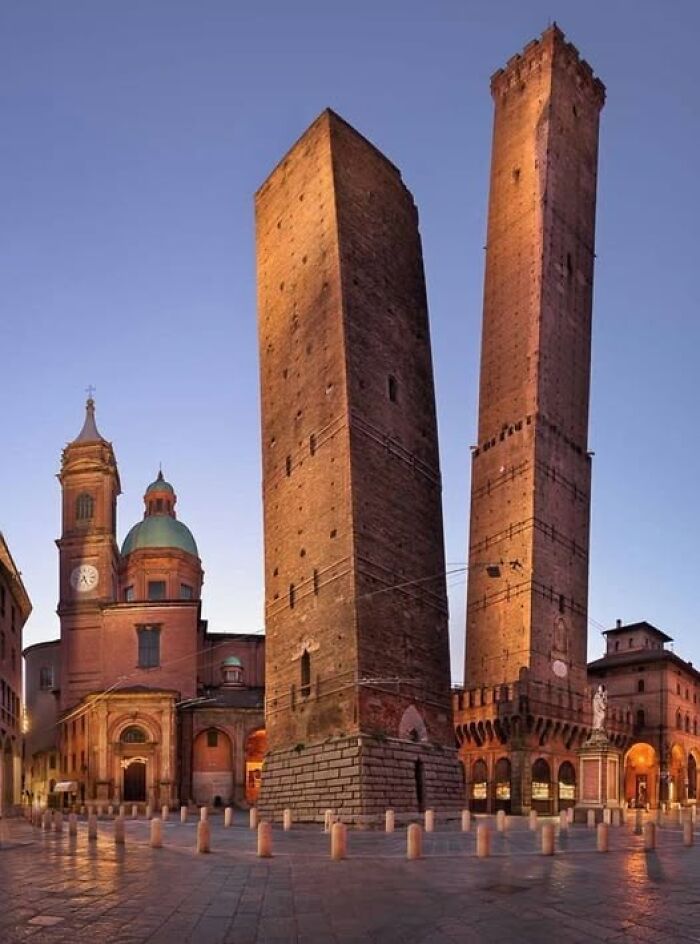
Image credits: ancientnexus
#20
Ancient Babylonians did math in base 60 instead of base 10. That's why we have 60 seconds in a minute and 360 degrees in a circle.

Image credits: ancientnexus
#21
The Great Zimbabwe Walls, an awe-inspiring feat of ancient engineering, rise majestically from the earth, crafted from granite blocks that were expertly assembled without the use of mortar. These remarkable structures, dating back to the 11th century, showcase a meticulous craftsmanship that includes a unique inward slope, transitioning from rugged, raw blocks into elegantly polished courses. This ingenious technique not only reflects the builders’ mastery but also guarantees the walls' stability and durability throughout the ages.
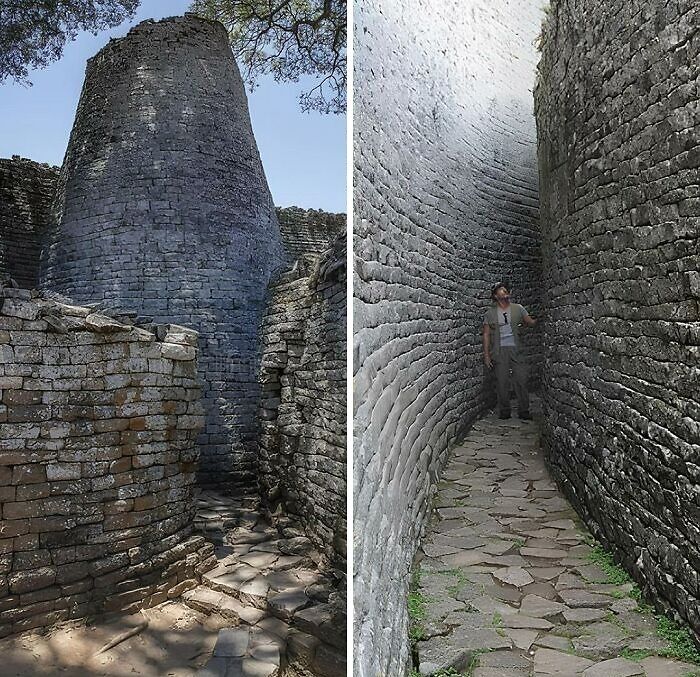
Image credits: ancientnexus
#22
Constructed from 1978 to 1982 in Noisy-le-Grand, a suburb located ten miles east of Paris, Les Espaces d'Abraxas is a notable housing estate designed by the late Catalan architect Ricardo Bofill, who passed away last year.
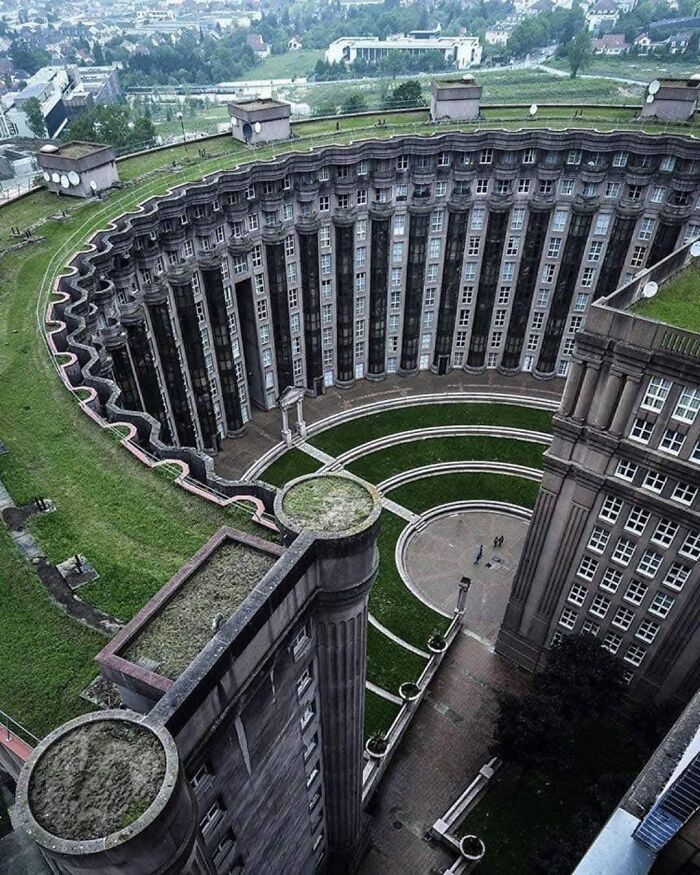
Image credits: ancientnexus
#23
The rediscovered tunnels beneath Puebla, Mexico, are an incredible historical find, dating back up to 500 years. This 10-kilometer network, tall enough for horseback riders, was uncovered in 2015 after being considered a myth for centuries. Stretching from Puebla’s historic center to Loreto castle, where the Cinco de Mayo battle took place, the tunnels may have served strategic roles during the Mexican War of Independence and the Puebla War against France. Artifacts like toys, kitchen items, and weapons from the 1800s have been found preserved in the mud.

Image credits: ancientnexus
#24
Nestled in northern Quebec, the Pingualuit Crater is a geological marvel that dates back an astonishing 1.4 million years, the result of a powerful meteor collision. This immense crater spans an impressive 3.44 kilometers (2.14 miles) in diameter and cradles the stunning Lake Pingualuk, which plunges to depths of 267 meters (876 feet). What makes this lake truly extraordinary is its reputation for having some of the purest water on the planet, nourished solely by rain and snow—there are no rivers linking it to the outside world. During World War II, pilots relied on the lake's perfectly round shape as a navigation aid. Today, as part of Pingualuit National Park, which was established in 2004, this breathtaking site invites adventurers and nature lovers alike to uncover its timeless beauty and intriguing history.
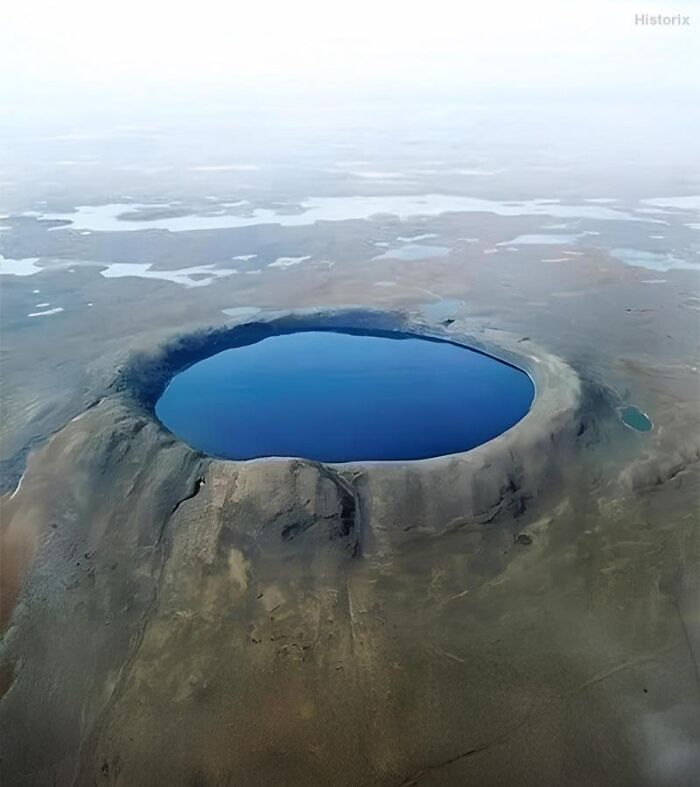
Image credits: ancientnexus
#25
Buried Paris. This is a photograph from 1973, during the construction of Les Halles in Paris. The structure wrapped above the metal scaffolding on the right is the Fountain of the Innocents! The photograph shows underground buildings going down about five floors.
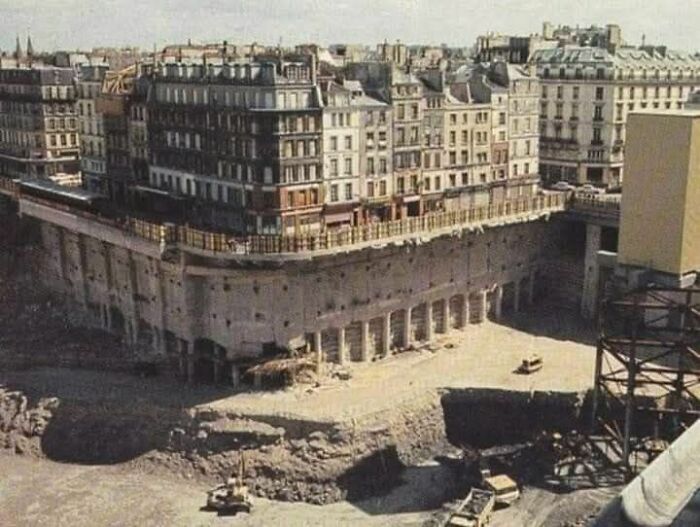
Image credits: ancientnexus
#26
The Hanging Stone, situated in the Krasnoyarsk Territory's Ergaki Reserve, is an extraordinary natural phenomenon. This colossal boulder, approximately 600 tons in weight, delicately balances on the precipice of an abyss. For centuries, it has upheld its seemingly unstable posture, characterized by an exceedingly minimal contact surface with the underlying rock. Despite its precarious orientation, the stone exhibits remarkable stability, challenging conventional understanding and enhancing the breathtaking allure of the reserve.
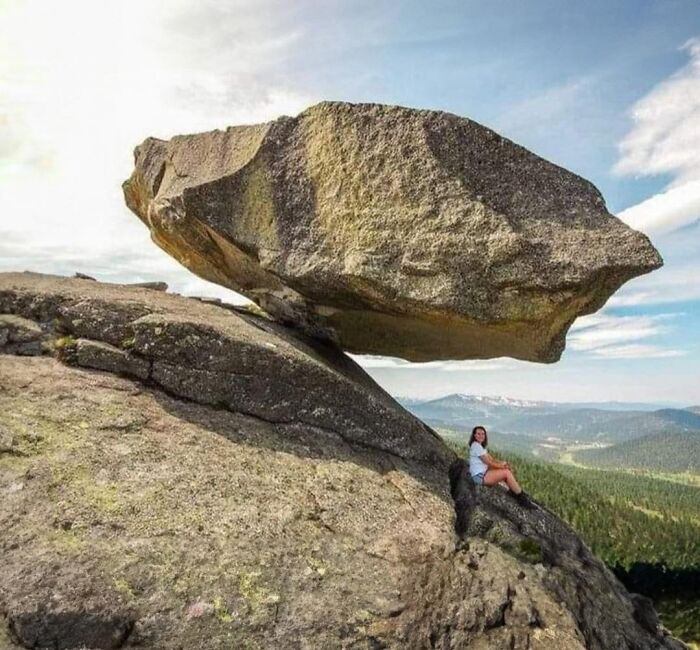
Image credits: ancientnexus
#27
These eerily similar petroglyphs from Japan, Utah, and Azerbaijan throw down the gauntlet on our understanding of ancient civilizations. Nestled in Fugoppe Cave in Japan, scattered throughout Nine Mile Canyon in Utah, and emblazoned in Gobustan, Azerbaijan, each carving presents a winged or flying human figure — a striking visual that begs the question of how three culturally diverse groups, separated by oceans and eons, managed to conceive such an idea. The timeline adds another layer of intrigue: Japan’s versions are roughly 7,000 years old, Utah’s range from about 1,000 to 2,000 years, while Azerbaijan boasts engravings that could be as much as 10,000 years old.
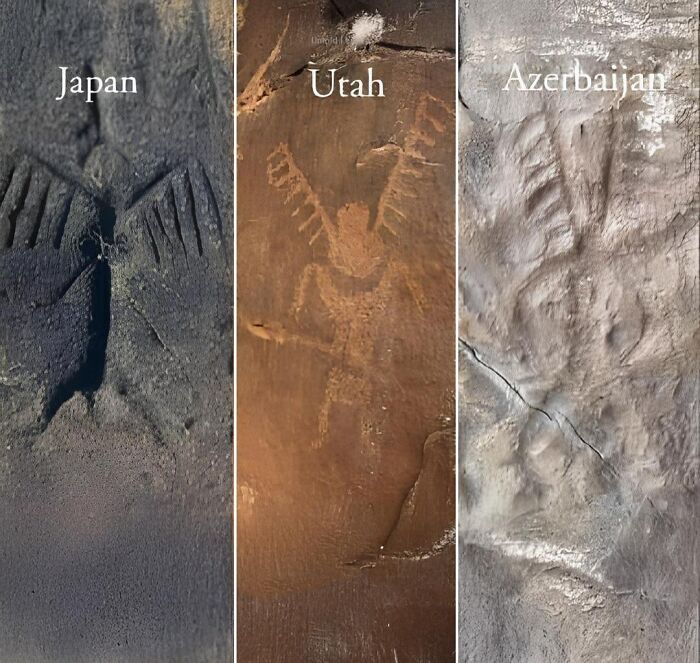
Image credits: ancientnexus
#28
Journey back to the early fifth century, where the Ethiopian Bible emerges as the oldest and most complete version in existence, meticulously crafted on goat skin. This extraordinary relic not only holds the title of the first illustrated Christian Bible but also serves as a window into the intricate tapestry of early Christian traditions and beliefs.

Image credits: ancientnexus
#29
An Ancient tree discovered in New Zealand contains a 42,000-year-old record of a reversal of Earth's magnetic field.
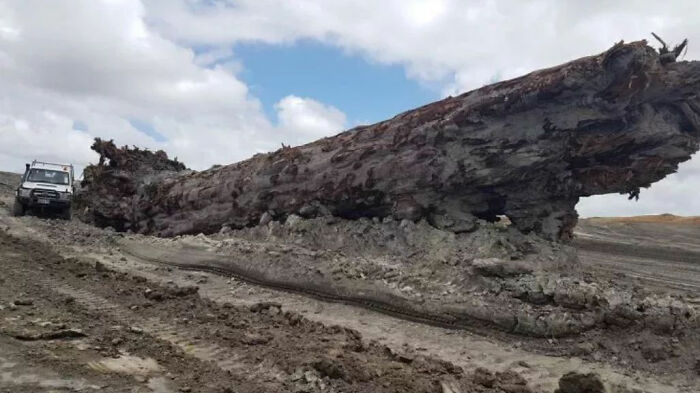
Image credits: ancientnexus
#30
The awe-inspiring giant Olmec head, a monumental testament to the artistry of ancient civilizations, skillfully carved between 1500 and 400 BCE. These colossal masterpieces, each weighing an astonishing 50 tons, not only captivate the eye but also unveil the remarkable capabilities and intricate societal structure of the Olmec civilization, echoing their legacy through the ages.
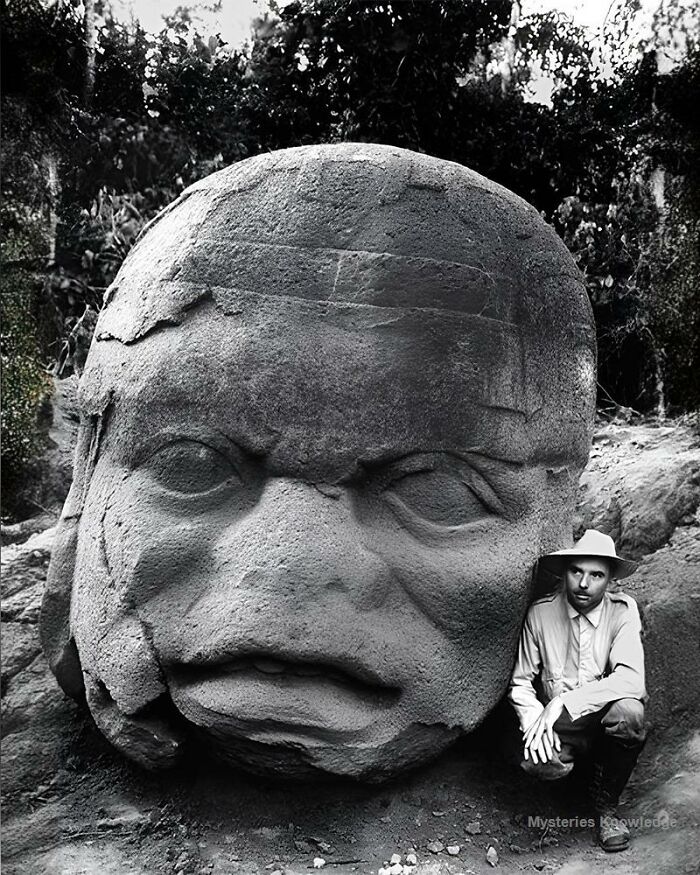
Image credits: ancientnexus




